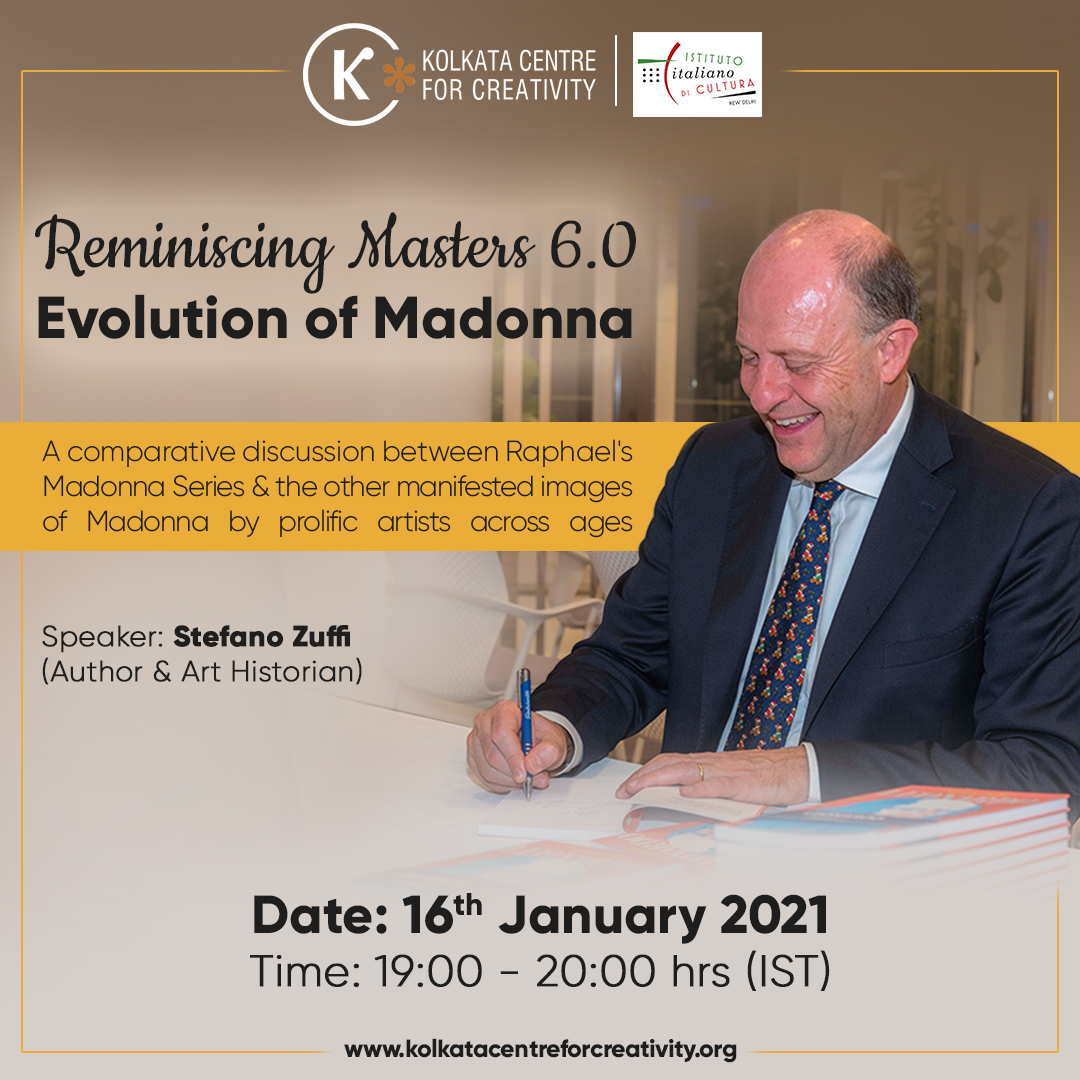Reminiscing Masters 5.0 Evolution of Madonna
On the 16th of January, 2021, in partnership with the Italian Institute of Culture, New Delhi, KCC organized the 6th installment of Reminiscing Masters. Following the success of the first illuminating discussion on Raphael Sanzio’s life and work held on the 8th of August on the occasion of the artist’s 500th death anniversary featuring Prof. Soumik Nandy Majumdar and Nanak Ganguly, this was the second episode in the series that looked at Raphael’s works. The Italian art historian Stefano Zuffi, who is an expert on Renaissance and the Baroque period, had joined us to take us through Raphael’s Madonna Series. After giving us Raphael’s brief biographical sketch, Zuffi shared with the audience the first painting attributed to a very young Raphael—a fresco of Madonna with the infant Jesus. Several scholars, including psychologists, believe that the absence of his mother was what prompted the young Raphael to paint Madonna. Interestingly, in his teens, Raphael painted yet another young Madonna in God, the Father and the Virgin. But this time, it was done on a wooden plank - a medium he would continue to work till his death at the age of 37. In Crowning of the Virgin, we come across a Madonna that bears a stylistic resemblance to Pietro Perugino’s work. Furthermore, in the early years of the sixteenth century, Raphael created two more paintings of Madonna with the child. These paintings, housed in the Staatliche Museen in Berlin and Norton Simon Museum in California, once again remind us of Perugino’s work. However, Zuffi observed that Raphael could not be categorized as Perugino’s pupil as, by then, he was already developing his distinct style.

As Raphael moved to Florence where da Vinci and Michelangelo were already at work, his Madonnas seemed to imbibe a different flavour. Zuffi showed us through images how from Perugino’s ‘eternal spring’ Raphael moved on to ‘the impression of a cold winter’. da Vinci’s ability to express tension and dynamism of movement, and in turn, reveal the soul through static images, could also be noticed in Raphael’s Madonnas from Florence, Zuffi elaborated. Raphael’s subsequent shift from Florence to Rome, also marked the period when his Madonnas started to appear in public places as altarpieces as opposed to remaining in the private collections of the patrons. This was also the time, Zuffi explained, when Raphael had a workshop and many apprentices.
Date: 16 January 2021
Time: 7 to 8 pm

Reminiscing Masters Test
REGISTER NOW


.jpg)
